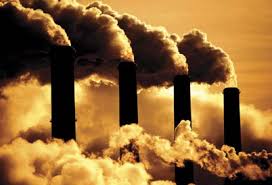
We all want access to clean air and safe communities for our families to thrive. However, communities of color and low-income communities – especially those in south Seattle and the surrounding communities – disproportionately experience air and water pollution and proximity to hazardous waste. This is what happens when communities of color and low-income communities are excluded from decision-making. By centering the experiences of those most impacted, we can reverse these effects and build a resilient economy. This will require us to not only address climate change head-on but also to invest in communities experiencing health inequities.
Take bold action to address climate change and regulate polluters
Communities of color bear the brunt of environmental damage of an extractive economy that disregards our wellbeing because we have not historically been at the tables to set environmental policy. This means we are more likely to breathe toxins or live near hazardous waste, or our children to have asthma. Tackling climate change and addressing the health and wellness of our communities go hand in hand and includes:
- Regulating those responsible for emissions and toxic chemicals: We must take action to ensure that corporate polluters are held accountable for dramatically cutting their greenhouse gas emissions. We also need to hold polluters accountable for the toxins that impact our neighborhoods. This includes utilizing fines and taxes for those who do not comply with these standards.
- Investing in clean energy and adopting low-carbon fuel standards and higher fuel-efficiency standards for vehicles: At every stage in our policy making process, we need to be committed to investing in and incentivizing clean energy, such as wind and solar and making strategic steps to dramatically reduce greenhouse gases. This includes adopting higher fuel efficiency standards for newly produced vehicles to reduce the greenhouse gases in our communities. We should also be working toward a low-carbon fuel standard – just as Oregon, California, and British Columbia have done.
Target investments into communities that face the biggest environmental health disparities Environmental justice is not just about stopping pollution and reversing climate change. It is about accounting for the generations of historical and contemporary racism that have left communities of color to bear the brunt of environmental health disparities. That is why we need to clearly embed an environmental justice framework into all statewide environmental policy and target investments accordingly. We can take important steps in this direction by embracing the following strategies:
- Adopting a statewide environmental justice framework to embed in policymaking: Washington state needs to adopt a statewide environmental justice framework that centers communities that suffer the most severe health impacts of environmental degradation. This should serve to ensure all our environmental policies are being created through the lens of accounting for historical and contemporary environmental racism. The state’s newly created Office of Equity could provide this type of necessary accountability and oversight.
- Investing in a green economy and just transition: Not only does our state need to invest money into the creation of green jobs to accelerate our path to clean energy, but it also needs to do so in a way that centers these job opportunities and the necessary training for them in the communities that are most impacted by pollution, toxins and environmental degradation. That is why an environmental justice framework is so essential ensuring investments are targeted to offsets the most negative impacts of our current extractive economy.
In addition to state investments, the fees and taxes our state acquires from regulating polluters should also be allocated in a similar way toward place-based green economy investments.
- Invest in clean transit-oriented community development to keep communities in place: We need to be strategic about growth so that our policies simultaneously keep vulnerable people in place, build livable, vibrant communities, and reduce greenhouse gas emissions. This type of policy work requires pairing strong investments in affordable housing with clean and efficient public transportation options, so it is easier for people to live near where they work.
This includes ensuring that our state has a robust transportation budget that not only keeps our roads and bridges strong shape but that also allows for important investments. For example, we need to ensure our cities can ensure transportation electrification, especially in communities that may need to travel furthest to workplaces.
It is long past time for us to tackle the intersections of racism and environmental degradation in our policymaking. Stopping the harm to our communities and targeting resources toward communities of color is critical for our path toward a green and just economy.

